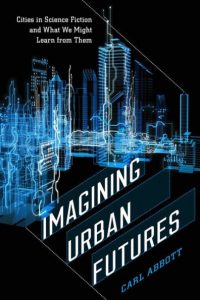
The chapter definitely challenges the status quo of cities that I take for granted, and it does so by presenting different cinematic imaginations of the future city. In cinematic imaginations, buildings are not necessarily of the size they are today. Cities are not necessarily on land, and they do not always stay in a fixed place. They are migratory, flexible and on the move. They can move through space, oceans, or lands; they “fly, walk, crawl, roll, creep, and float”. I would say that the chapter opens my eyes to a variety of radical imaginations of the future city that are vastly different from each other. Nevertheless, all versions of imaginations do teach us something, and “imaginative writers have an open invitation to step in and help” as planners explore possibilities of the future.
Yipeng Duan 3035660146
An excellently introspective and thoughtful response to Abbot’s reading and this week’s focus of Sci-Fi genre films. As you stated, this genre of film such as the cities presented in it are “migratory, flexible and on the move,” thereby challenging our conventional notion of time, place, scale and events. Do you think this allows us to momentarily escape into a dystopic/utopic landscape, and for what purpose?